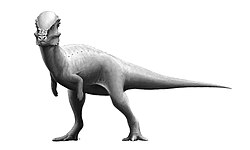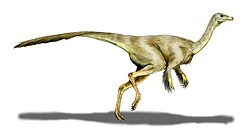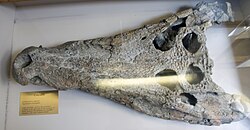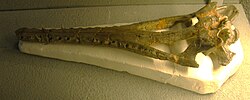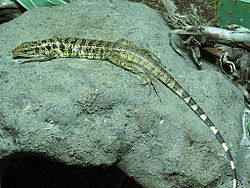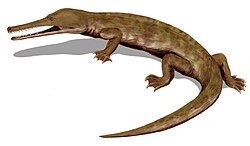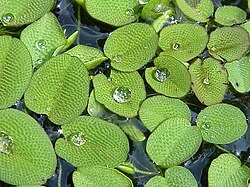Fish
Bony fish
| Bony fishes | ||||||
|---|---|---|---|---|---|---|
| Genus | Species | Location | Stratigraphic position | Material | Notes | Images |
| Acipenser [8] [17] [18] | A. amnisinferos [18] | A sturgeon | ||||
| A. eruciferus [17] |
| |||||
| A. praeparatorum [18] |
| |||||
| A. cf. A. amnisinferos [18] |
| |||||
cf. A. sp. [8] | Lower to upper Hell Creek Formation [10] | 18 specimens are tentatively assigned to Acipenser sp. [11] | Acipenser sp. is tentatively referred to the genus. [8] | |||
| Anchiacipenser [20] | A. acanthaspis [20] |
| A sturgeon, originally considered as indeterminate material [20] | |||
| ?Arotus | A. hieroglyphus |
| An osteoglossomorph of uncertain affinities. Presence in this formation not certain, and likely uncommon or highly restricted if it is. [21] | |||
| Belonostomus [8] [17] | B. longirostris [8] [17] | Lower to upper Hell Creek Formation [10] | 28 specimens [11] | A long-snouted slender fish classified as an aspidorhynchid. [8] | ||
| Coriops [22] | C. amnicolus [22] |
| ||||
C. fragosus [17] | A small amiid fish (ubiquitous). Previously known as Amia fragosa or Kindleia fragosa. [24] 2610 specimens have been assigned to Kindleia, making it an extremely common genus. [11] |  | ||||
| " Lepisosteus " [8] [17] | "L. occidentalis" [8] [17] | Lower to uppermost Hell Creek Formation [10] | 938 specimens are assigned to Lepidosteus [11] | A lepidosteid that is very common in the Hell Creek Formation. [8] Nomen dubium . [25] |  | |
| Melvius [8] | M. thomasi [8] | Lower to upper Hell Creek Formation [10] | 6 specimens are assigned to Melvius [11] | A large amiid fish. [8] | ||
| Phyllodus | P. paulkatoi | Fish with columnar teeth | ||||
| Palaeolabrus [17] | P. montanensis [17] |
| ||||
| Paleopsephurus [17] | P. wilsoni [17] |
| A paddlefish | |||
| Paralbula [26] | P. casei [26] |
| ||||
| Parapsephurus [27] | P. willybemisi [27] |
| A paddlefish |  | ||
| Platacodon [22] | P. nanus [22] |
| Small teleost fish | |||
| Protamia [17] | Indeterminate [17] |
| ||||
| Pachyrhizodontoidei | Indeterminate | Fish | ||||
| Polyodontidae [28] | Indeterminate [28] |
| Paddlefish | |||
| Protoscaphirhynchus [17] | P. squamosus [17] |
| A sturgeon | |||
| Pugiopsephurus [27] | P. inundatus [27] |
| A paddlefish | |||
Cartilaginous fish
| Chondrichthyes reported from the Hell Creek Formation | ||||||
|---|---|---|---|---|---|---|
| Genus | Species | Location | Stratigraphic position | Material | Notes | Images |
C. sp. [29] | A member of Hemiscylliidae. [29] | |||||
G. nordquistae |
| Isolated teeth | ||||
L. selachos [31] | Lower to upper Hell Creek Formation [10] | 40 specimens [11] | A genus of prehistoric sharks in the family Hybodontidae. It makes up 0.4% of the remains of the vertebrates of the Hell Creek Formation. [8] | |||
M. pustulosus [29] | Lower to upper Hell Creek Formation. [10] | 1677 specimens [11] previously assigned to M. bipartitus. [29] | Is an anacoracid batoid [8] rajiform related to guitarfishes. [29] Described on the basis of teeth formerly assigned to the species M. bipartitus. [29] The material assigned to Myledaphus bipartitus and makes up 16.5% of the vertebrate remains. [8] | |||
P. estesi [29] | A member of Ginglymostomatidae. [29] Formerly assigned to the genus Brachaelurus . | |||||
R. americana [29] | Middle Hell Creek Formation [10] | 5 specimens previously assigned to Squatirhina [11] | A wobbegong-like shark. [29] Formerly assigned to Squatirhina. The remains consist of 0.05% of the vertebrates. [11] Also known from the Lance Formation. [29] | |||
Carcharhinidae indet. [30] | Indeterminate |
| An isolated tooth. | |||
S.sp. |
| A Goblin shark relative that lived in shallow water to possibly even brackish and freshwater. [33] | ||||
| Carcharias [33] | C.sp |
| A sand tiger shark | |||




